The sculptural everyday: Andrew Green’s photographs of rural Italy
In an exhibition at the Estorick Collection, photographer & former architect Andrew Green makes images of nondescript massings in rural Italy. His work notices the coming together of nondescript architectures & the spaces formed inbetween.
This is a photographic exhibition of small Italian towns across
Umbria and Lazio which will not provide you with postcard cliché or glorious classical
set pieces. Instead, photographer Andrew Green has deliberately made images capturing
incidental moments of the anti-picturesque, celebrating the unstructured and
every day, casting light upon that which may not often be noticed in its
unremarkableness.
![]()
![]()
![]()
In his words, the photographed “civic buildings, churches, modern apartment blocks and workshops combine to create complex, subtle, and often quite strange and intriguing visual relationships.” He is also interested in the “the land and space in between … with its agriculture and industry” in a study of place which could be cold and distant if it wasn’t for a sense of familiarity and sincere interest imbued.
Green was a senior member of staff at architectural firm Allies and Morrison for over two decades, with a role in considering massing and form in large-scale developments and masterplans. It is perhaps then no surprise that these photographs take particular consideration of the local vernacular’s form and shape of what would normally be quite nondescript buildings, but here offered a moment of sculptural recognition.
![]()
![]()
![]()
The exhibition is in the final gallery of the Estorick Collection, so a visitor will have already soaked up five rooms of futurism and modernism from sketch to sculpture before entering Green’s work, inviting conversation. A 1924 oil painting by Mario Sironi, Urban Landscape, has some of the cold, flatness seen within Green’s photographs – the context more built up, a massing of industrial shapes, but similar to the photographs in the sharp shift between light and shade, the present silence, and unplanned collections of form.
Elsewhere in the building another work by Sironi, a 1914’s ink and gouache Futurist City, is full of vibrancy, potential, excitement, and science, whereas now looking at Green’s photos of Italy in the very future Sironi was projecting into, we see a more sedate, reflective place where the artist had expected energy.
There is also an acknowledged connection to Giorgio de Chirico, included a few times in the current hang of the wider Estorick Collection. A small c.1913 ink and pencil drawing by the artist, L’arrivo in autunno (The Autumn Arrival) captures a recognisable de Chirico open public space with a central statue on a plinth, perspectival colonnades on each side, stark shadows cast diametrically across the page. In his catalogue notes, Green says of the drawing that “there is an emptiness and sense of expectation that is often felt in Italy’s rural towns and villages,” adding that the single figure – here the statue – can add a moment of animation to an otherwise empty scene.
![]()
![]()
![]()
Green’s photographs have no people, but their presence can be felt. Cars litter the streets, suggesting there have been arrivals and will be departures. Hay fills an open-sided agricultural shed, awaiting collection or redistribution elsewhere. Hands will soon need to enter the planted fields to pick fruit emerging on vines.
There is also the presence of the photographer himself – behind the camera, but present in the scene, a lonely figure seemingly traversing these silent settlements. Green says that he doesn’t do much work on the images by way of post-production, instead preferring the immediacy of the moment he felt in situ to be portrayed. There is, through this, a sense of the rural flâneur, stopping not observe the social society of a city, but the social relationships of spaces formed in such unplanned places. The photos act as portraits of protagonists involved in the slowest of conversations.
![]()
![]()
![]()
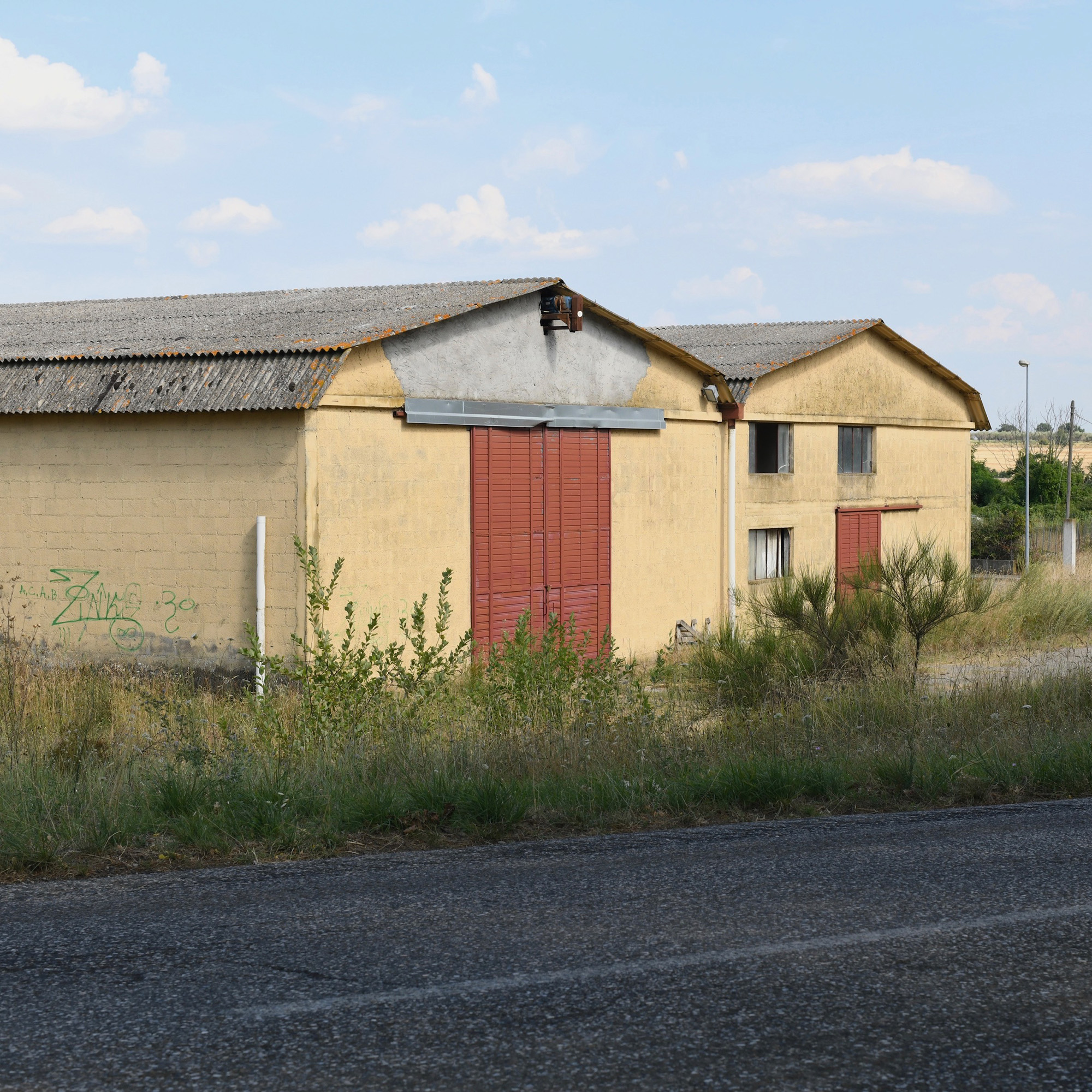
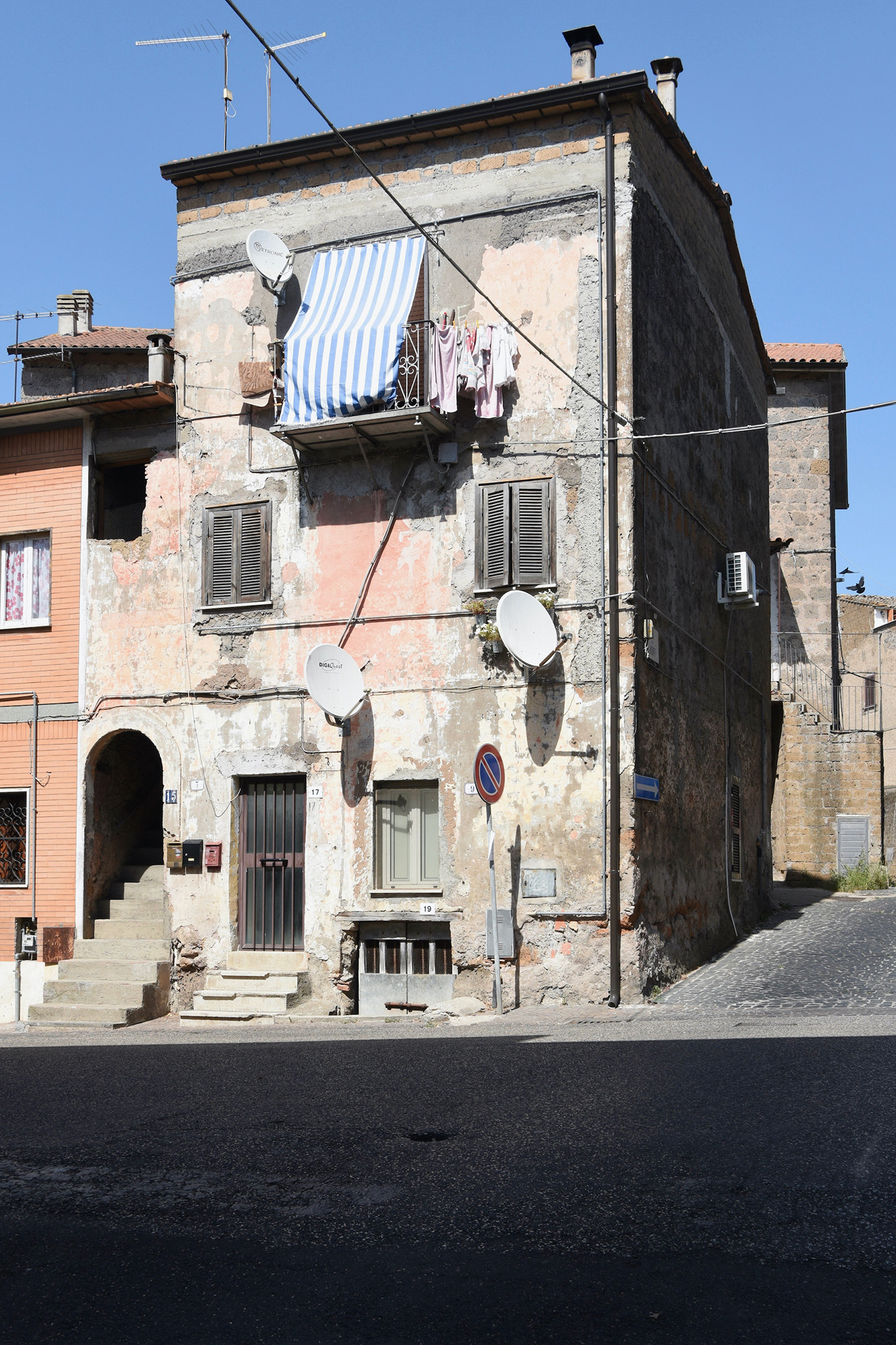

In his words, the photographed “civic buildings, churches, modern apartment blocks and workshops combine to create complex, subtle, and often quite strange and intriguing visual relationships.” He is also interested in the “the land and space in between … with its agriculture and industry” in a study of place which could be cold and distant if it wasn’t for a sense of familiarity and sincere interest imbued.
Green was a senior member of staff at architectural firm Allies and Morrison for over two decades, with a role in considering massing and form in large-scale developments and masterplans. It is perhaps then no surprise that these photographs take particular consideration of the local vernacular’s form and shape of what would normally be quite nondescript buildings, but here offered a moment of sculptural recognition.
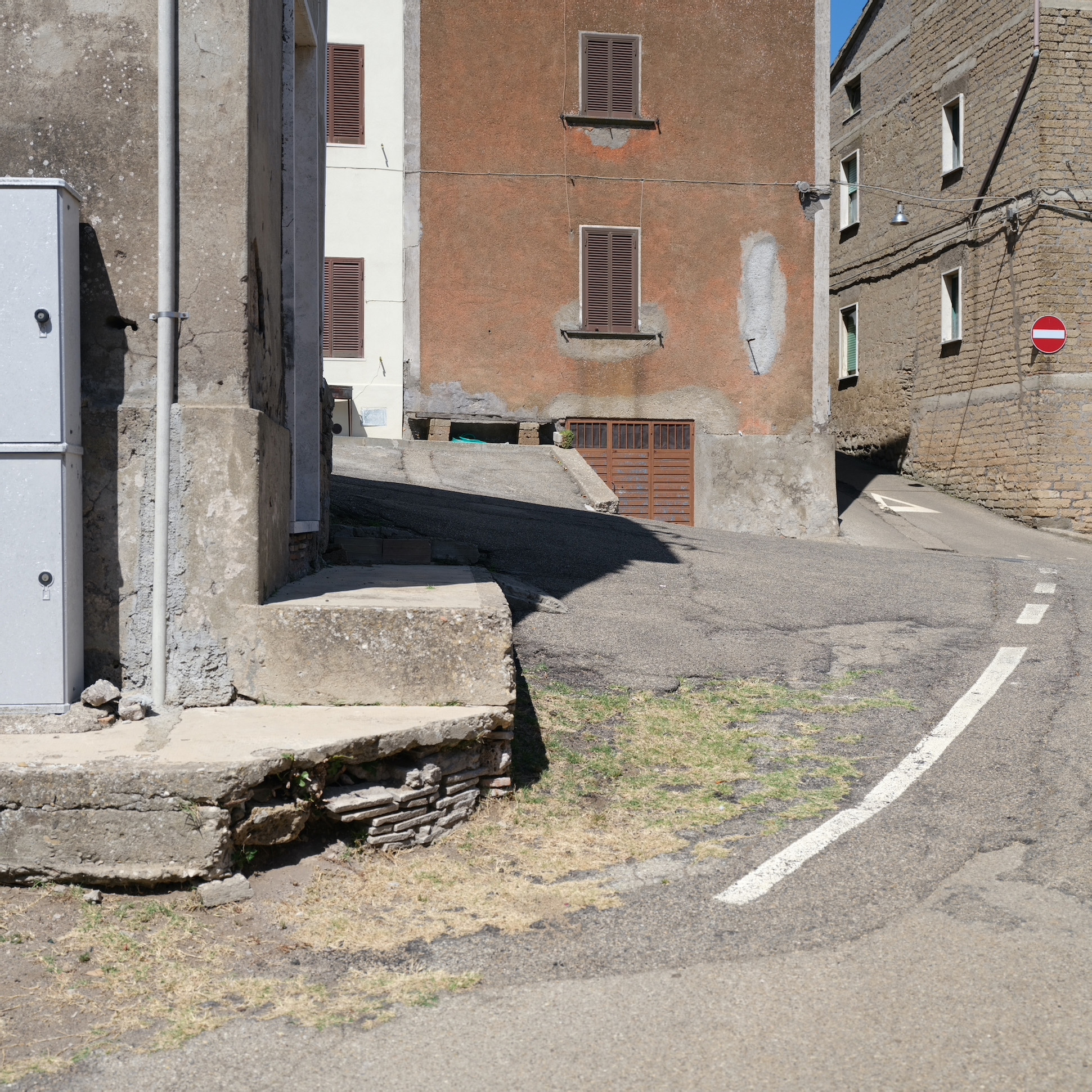
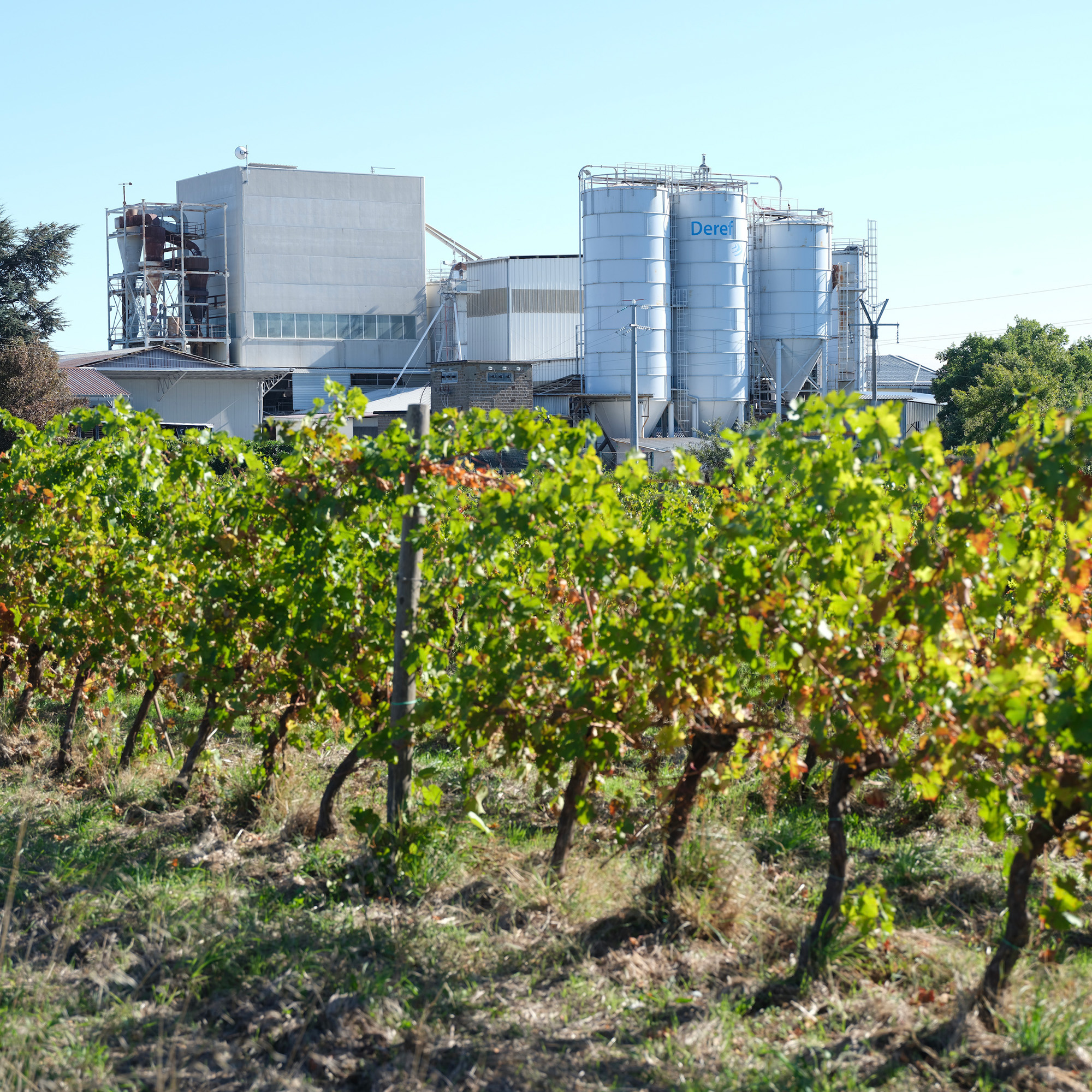
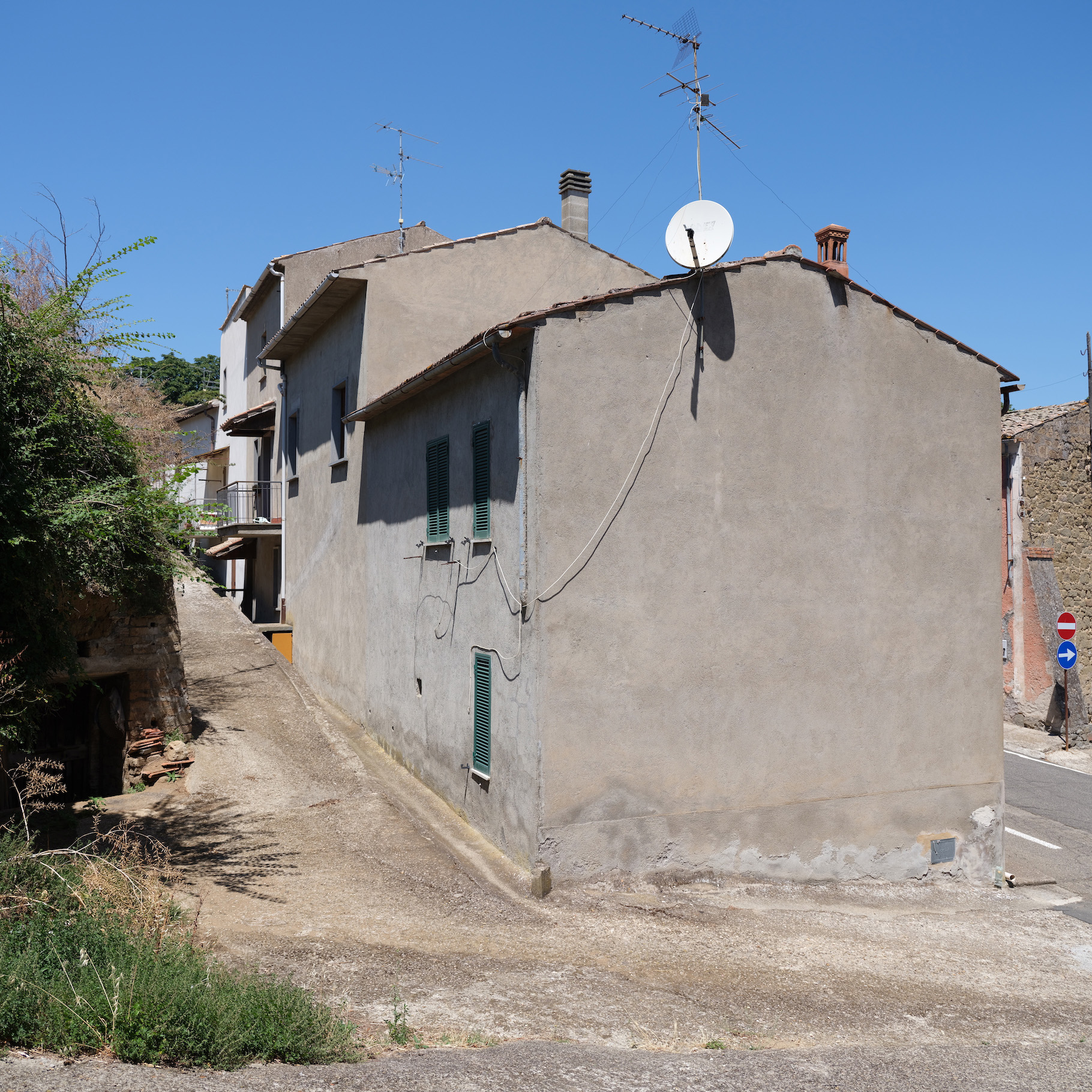
The exhibition is in the final gallery of the Estorick Collection, so a visitor will have already soaked up five rooms of futurism and modernism from sketch to sculpture before entering Green’s work, inviting conversation. A 1924 oil painting by Mario Sironi, Urban Landscape, has some of the cold, flatness seen within Green’s photographs – the context more built up, a massing of industrial shapes, but similar to the photographs in the sharp shift between light and shade, the present silence, and unplanned collections of form.
Elsewhere in the building another work by Sironi, a 1914’s ink and gouache Futurist City, is full of vibrancy, potential, excitement, and science, whereas now looking at Green’s photos of Italy in the very future Sironi was projecting into, we see a more sedate, reflective place where the artist had expected energy.
There is also an acknowledged connection to Giorgio de Chirico, included a few times in the current hang of the wider Estorick Collection. A small c.1913 ink and pencil drawing by the artist, L’arrivo in autunno (The Autumn Arrival) captures a recognisable de Chirico open public space with a central statue on a plinth, perspectival colonnades on each side, stark shadows cast diametrically across the page. In his catalogue notes, Green says of the drawing that “there is an emptiness and sense of expectation that is often felt in Italy’s rural towns and villages,” adding that the single figure – here the statue – can add a moment of animation to an otherwise empty scene.
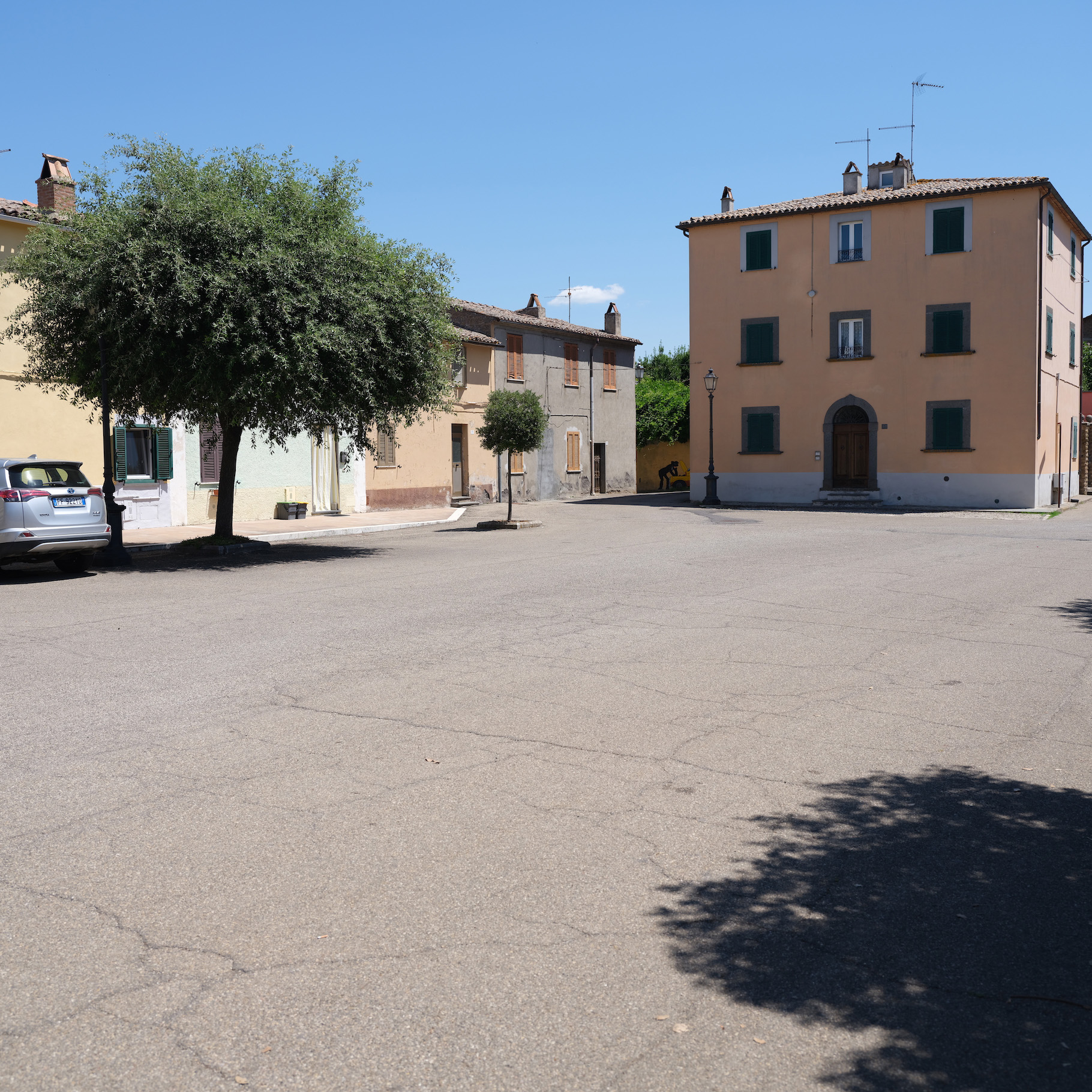
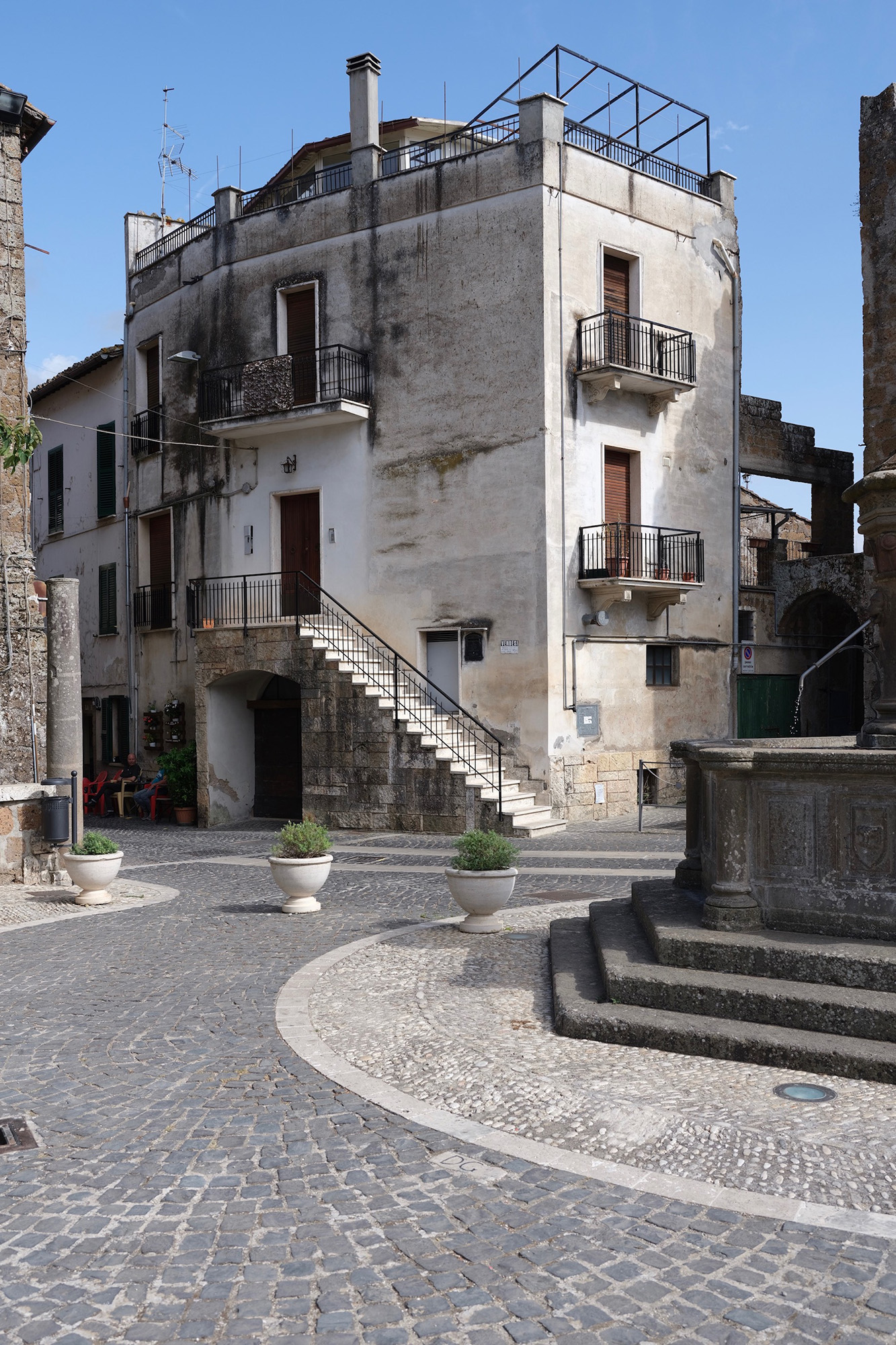

Green’s photographs have no people, but their presence can be felt. Cars litter the streets, suggesting there have been arrivals and will be departures. Hay fills an open-sided agricultural shed, awaiting collection or redistribution elsewhere. Hands will soon need to enter the planted fields to pick fruit emerging on vines.
There is also the presence of the photographer himself – behind the camera, but present in the scene, a lonely figure seemingly traversing these silent settlements. Green says that he doesn’t do much work on the images by way of post-production, instead preferring the immediacy of the moment he felt in situ to be portrayed. There is, through this, a sense of the rural flâneur, stopping not observe the social society of a city, but the social relationships of spaces formed in such unplanned places. The photos act as portraits of protagonists involved in the slowest of conversations.
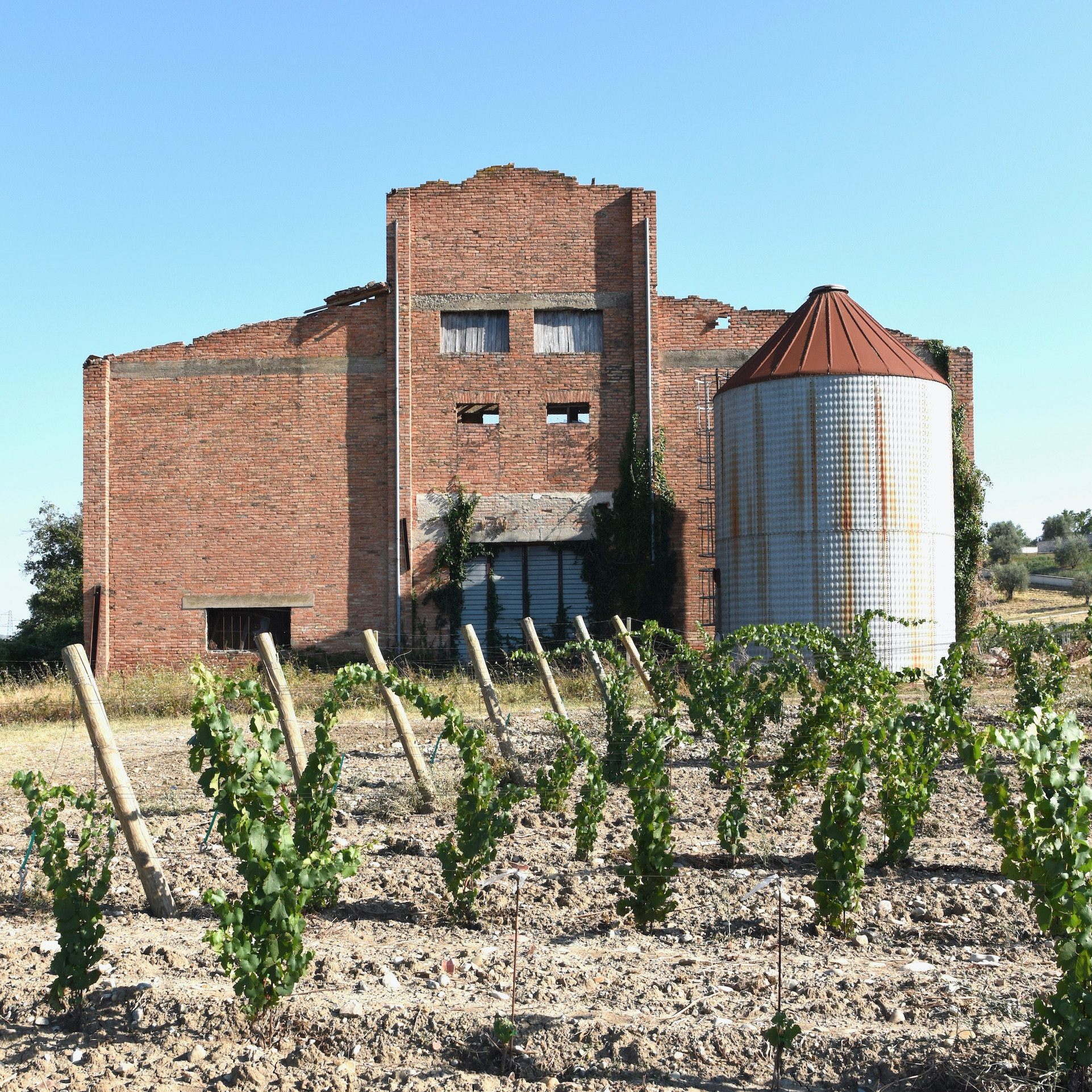


The Estorick Collection of Modern Italian Art is internationally renowned for its core of Futurist works. It comprises some 120 paintings, drawings, watercolours, prints and sculptures by many of the most prominent Italian artists of the modernist era. There are six galleries, two of which are used for temporary exhibitions. Since opening in 1998, the Estorick has established a reputation and gained critical acclaim as a key venue for bringing Italian art to the British public.
www.estorickcollection.com
www.estorickcollection.com
visit
Andrew Green, Rural Italian Towns and Villages + the Spaces
in Between is on at the Estorick Collection of Modern Italian Art until 4 September
2022.
www.estorickcollection.com/exhibitions/andrew-green-rural-italian-towns-and-villages-the-spaces-in-between
images
All images 2017-2022 © Andrew Green.
publication date
26 August 2022
tags
Agriculture, Allies and Morrison, Andrew Green, Giorgio de Chirico, Estorick Collection, Everyday, Flaneur, Italy, Lazio, Nondescript, Photography, Rural,
Mario
Sironi,
Umbria, Village
www.estorickcollection.com/exhibitions/andrew-green-rural-italian-towns-and-villages-the-spaces-in-between


